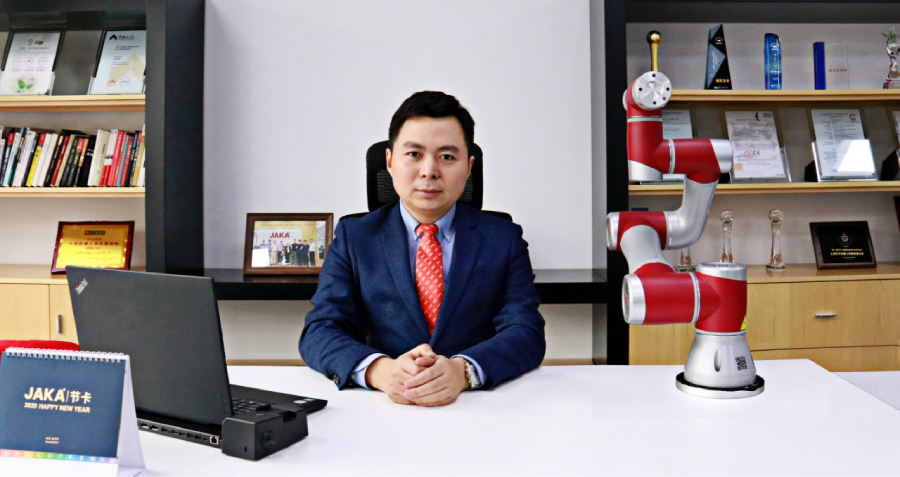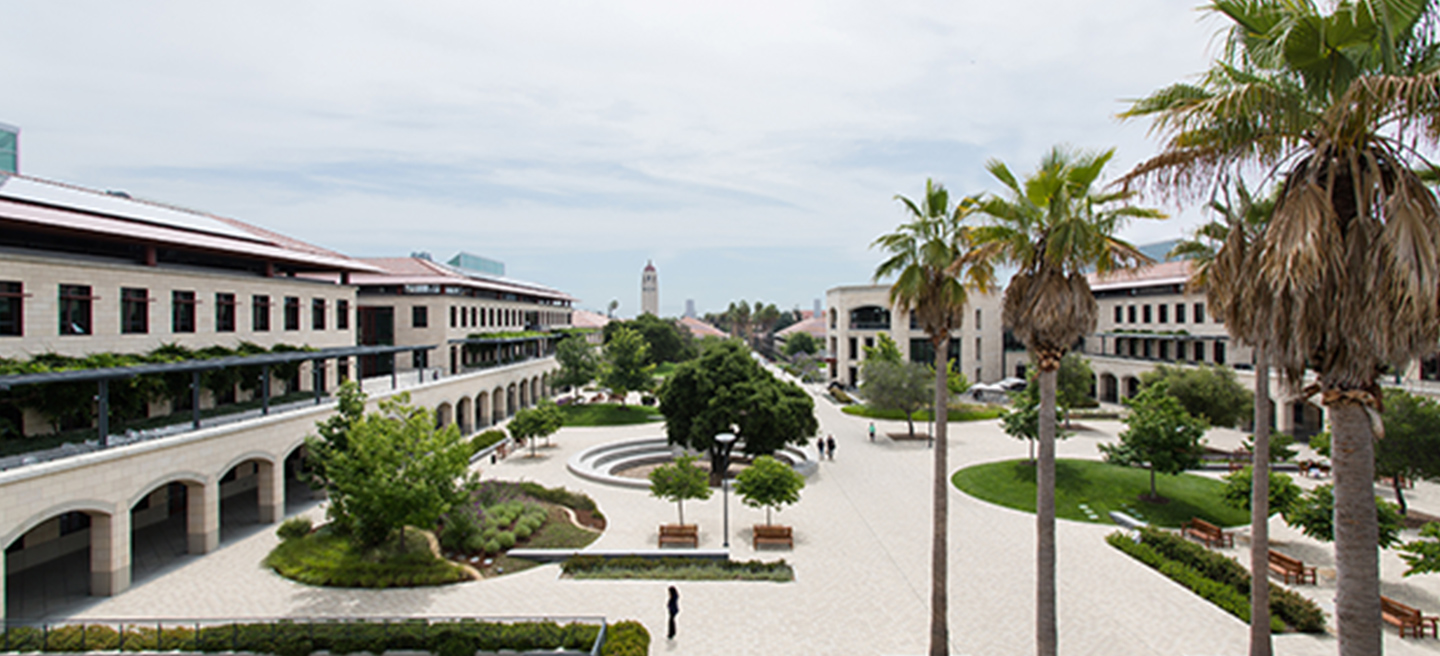Robotics, in particular robots equipped with artificial intelligence (AI), is key to industrial development as it drives efficiency, precision and scalability across manufacturing processes. By automating repetitive and complex tasks, robotics reduces labor costs, minimizes errors and accelerates production timelines—enabling industries to meet rising global demand while maintaining high quality standards.
As technologies like AI and IoT converge with robotics, they unlock new levels of adaptability and data-driven decision-making, making robotics a tool for productivity and a strategic asset for industrial competitiveness and innovation.
In this interview, Li Mingyang, Founder and Chairman of JAKA Robotics, discusses China’s positioning in the AI-driven robotics market, the industries that will be most affected by embodied intelligence and how the global geopolitical situation may actually accelerate the need for industrial robotics.
Q. What are China’s strengths and challenges in becoming a global leader in AI-driven robotics?
A. Companies are already manufacturing intelligent robots with mature joint technology, leading performance and high market share. Looking at collaborative robots, JAKA Robotics’ self-developed lightweight and integrated joint technology enables modular robot design, meaning the company can produce industry-leading integrated joints that are quiet, highly precise and low cost, and this gives them technological and market advantages worldwide.
MIR DATABANK’s database shows that in 2024, Chinese-branded collaborative robots, which include JAKA Robotics, accounted for over 50% of global sales, and with that, the accumulation of associated industry-specific scenario data will help accelerate the iteration of AI algorithms.
In terms of talent advantages, in 2024, scientists with Chinese backgrounds accounted for 46% of the world’s top AI talent, compared to just 20% in the US, according to a New York Times survey. Domestic universities such as Tsinghua University and Shanghai Jiaotong University, which are in the upper echelon of international research in generalized robot operation skills, and are home to a number of global leaders in the field of embodied intelligence technology, including machine learning. These talents can help the development of AI and other new productive forces in China, as well as help the global AI push.
There are also the benefits of the intelligent automobile supply chain. The size of China’s existing intelligent automobile industry has led to the mass production of core components such as LiDAR and high-calculation chips, as well as encouraging the embodiment of intelligent algorithms. Additionally, there is a huge opportunity to translate the manufacturing lessons accrued from reaching an annual production of 10 million NEV units to the field of robotics.
China’s flourishing AI models are also of use. China is lucky to have many large AI model developers pushing developmental boundaries. For example, DeepSeek’s multimodal large model MoE-16, has an energy efficiency ratio 2.7 times that of GPT-4 under the same computational load, and this energy efficiency is particularly important in the edge computing scenarios deployed in mobile robot platforms. Huawei’s PanGu Model 5.0 also shows greatly enhanced capabilities in mathematics, complex task planning and tool invocation [a mechanism for extending the capabilities of Large-Language Models (LLMs)].
There are also two key challenges. The first is morphological standardization. So far, there is no standardization of form for intelligent robot hardware, and this affects algorithm iteration and their application. A good analogy is the automotive industry, where, over the years, we have developed a global standard for what is considered a traditional automobile: four wheels plus a chassis. As a result, it has been comparatively quite easy to add intelligence and electrification to automobiles as the form has remained the same. Without a common understanding for robots, other related processes become more difficult.
The second challenge is meeting the high demands for operational intelligence. Basic operations for humanoid robots are significantly more demanding when compared to, say, smart cars, in terms of dexterity and manipulation. While some requirements are the same for both, humanoid robots also need highly generalized and reliable manipulation capabilities, such as grasping, lifting and tool use, which require human-like flexibility and adaptability, something that is difficult to achieve. In addition, the fact that humanoid robots may be required to work across multiple operational scenarios or with various tools or components means that there are significantly higher requirements for applicability.
Q. To what degree will different industries benefit from AI-powered robotics and what notable advances have been made so far?
A. Today, Tesla is leading the way as a benchmark in embracing AI, where it has significantly improved productivity, product quality and product intelligence. Intelligent automobiles as an industry has seen a lot of technology and investment already, and provides good lessons for the wider field of robotics.
Looking further forward, AI-powered robotics will drive growth across a wide range of industries. Firstly, we can look at the intelligent reconfiguration of manufacturing. Industrial robots offer breakthroughs in the rigid limitations of traditional production lines through dynamic path planning and multimodal perception, allowing for increasingly flexible production. The end goal is intelligent creation rather than simple mechanical substitution and the development of robotics assets should help with the shift away from requiring as much human experience.
Logistics is another sector in which robotics will play a role in development, particularly when it comes to efficiency. Intelligent warehouses that utilize real-time environment modeling and multi-robot collaboration will see improvements in space utilization and operational efficiency. On a much more macro scale, this will eventually lead to more efficient allocation of global resources.
Thirdly, the healthcare industry will benefit from AI-powered robotics, with surgical robots able to be significantly more precise than humans, and the use of data mapping will allow for improvements in diagnosis and precision treatments.
There will also be beneficial outcomes in agriculture, whereby AI-driven robotics will help with finding the right balance between natural variables and product standardization. On top of this, we can expect a service industry experience upgrade, where AI-driven human-machine interaction will upgrade the service industry value chain, establish a new balance between standardized replication and personalized experiences and, through task layering, make the most of the synergy between human creativity and machine execution.
Q. To what degree is the current geopolitical environment impacting the international robotics market?
A. Looking at the longer term, the globalization and development of industrial robotics could actually be accelerated as a result of the US-China trade war and the economic uncertainty that it is creating. There has been an increase in factory relocation to various countries around the world, in part due to the geopolitical situation, as well as rising labor costs and recruitment issues in China.
As a company, we see the continued need for robotics in the manufacture of NEVs, 3C miniaturization [the process of producing ever-smaller mechanical, optical and electronic products/devices] as well as other manufacturing needs. There is also the opportunity to expand into new energy, biomedicine and other less-traditional fields. At the same time, there is a need to grow an in-depth global supply chain and make sure that it is properly localized and resilient to hedge against geopolitical risks.
To do this, in large-scale markets there is a need to establish localized scenarios, services and even independent supply chain systems, forming a comprehensive production cycle, producing high-quality and competitive products that can ensure positive brand recognition in each area. For example, if we look at our development in the European market, taking this approach has meant that we are now competitive with local giants such as Schneider in terms of research and development, product performance, production management and green logistics.
Q. How do you see the industrial robotics industry developing over the next five to ten years?
A. Firstly, we will see a popularization of the application of ‘intelligence,’ greater software-hardware integration and more embodied intelligence. Second, we can expect some sort of breakthrough in the combination of advanced AI models and lightweight technologies.
Industrial robots themselves will see greater integration of multimodal perception (3D vision, force perception), cognitive reasoning (large AI models) and dynamic execution capabilities to form a closed-loop intelligent system that can address a wide array of tasks across settings and industries.
Bio: Li Mingyang is the Founder and Chairman of JAKA Robotics. Prior to founding the company in 2014, he had been involved in the automation equipment industry for more than a decade, holding key technical and management positions in well-known multinational companies such as Tetra Pak in Sweden. He is also an alumnus of CKGSB’s EMBA program.




















